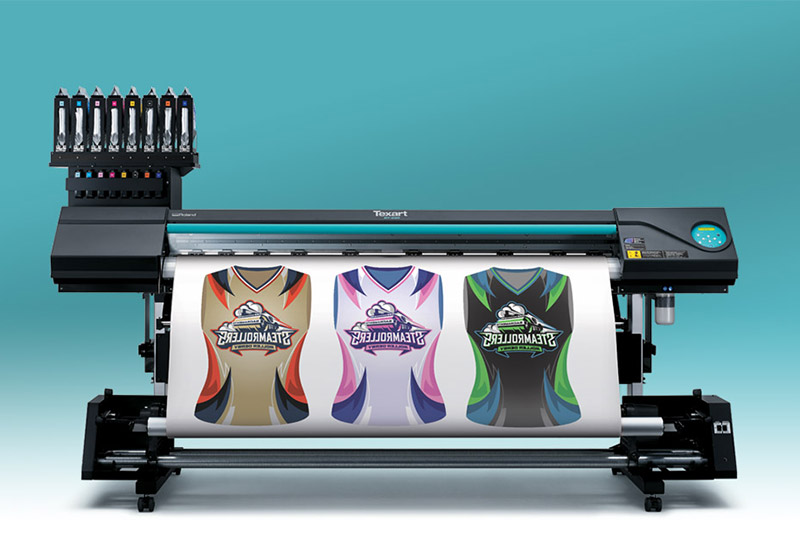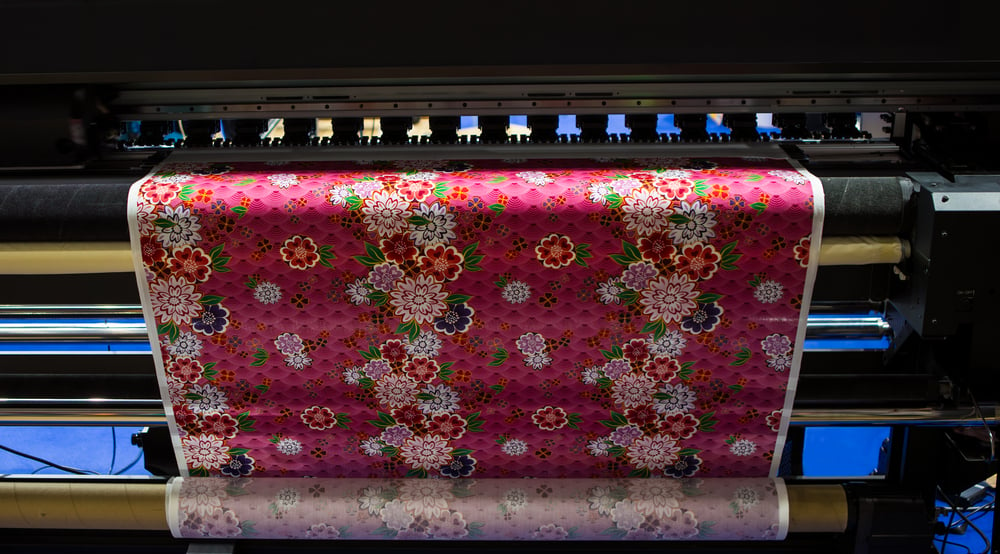Exactly How Screen Printing Revolutionizes the Branded Clothing Sector
Exactly How Screen Printing Revolutionizes the Branded Clothing Sector
Blog Article
From Conventional to Digital: Comprehending the Evolution of Fabric Printing
The change of cloth printing from traditional techniques like block printing and resist coloring to modern methods such as display and digital printing notes a considerable change in the fabric sector. Traditional techniques, soaked in artisanal workmanship and social significance, have actually slowly provided method to electronic innovations that provide unprecedented precision, performance, and personalization. This change not just enhances production abilities yet likewise lines up with growing demands for sustainable methods. Yet, exactly how do these innovations influence the essence of cloth printing, and what might the future hold for this ever-evolving craft?
Standard Fabric Printing Methods
In the early phases of textile production, traditional cloth printing approaches worked as the foundation of fabric layout, supplying both functionality and artistic expression. Strategies such as block printing, withstand dyeing, and stenciling were meticulously developed and improved over centuries, each contributing unique visual high qualities and useful applications to the textile sector. Block printing, among the oldest approaches, involved carving intricate layouts into wood blocks, which were then dipped in dye and pressed onto material. This labor-intensive procedure allowed for the repetition of comprehensive patterns, showcasing the craftsmen's skill and creative thinking.
Resist dyeing, consisting of strategies like batik and tie-dye, utilized wax or other compounds to avoid color from passing through specific locations of the fabric. This technique developed striking contrasts and detailed layouts, commonly imbued with social importance. Stenciling, one more standard approach, entailed cutting patterns into a product and applying dye with the openings, using a less complex yet efficient method to generate recurring styles.
These traditional techniques not just formed the fabric sector's early advancement yet likewise laid the foundation for future technologies. Each technique reflected the cultural and local characteristics of its origin, preserving and sharing artisanal understanding with generations.
The Increase of Screen Printing
The development of display printing in the early 20th century marked a considerable departure from traditional approaches, using unmatched flexibility and efficiency. Display printing allowed designers to generate complex patterns and dynamic colors on fabrics, which were formerly challenging to attain with block printing or hand-painting techniques.
One of the key benefits of screen printing is its capacity to duplicate complex designs widespread with impressive fidelity. This scalability made it greatly preferred in the industrial fabric industry, where automation without giving up high quality is paramount. Display printing fits a broad variety of dyes and inks, broadening the scheme of structures and coatings available to developers.
Furthermore, the process is highly versatile, appropriate for numerous fabric types consisting of cotton, silk, and synthetics. This adaptability, integrated with its cost-efficiency for big runs, strengthened screen printing's duty as a cornerstone of modern textile production. Therefore, the rise of display printing reinvented the industry, pushing the borders of what was feasible in fabric layout.

The Advent of Digital Printing
Building on the amazing innovations brought by screen printing, the fabric sector experienced an additional groundbreaking growth with the development of electronic printing. Arising in the late 20th century, electronic printing transformed the means layouts are moved onto textiles, supplying extraordinary adaptability and efficiency. Unlike conventional techniques, which often required extensive setup and substantial hand-operated treatment, digital printing employs computer-aided layout (CAD) innovation to produce elaborate patterns directly onto the textile with high accuracy.
This technology has actually allowed fabric manufacturers to meet the growing need for customization and on-demand production. By getting rid of the need for screens and plates, electronic printing reduces and decreases lead times material waste, making it a much more sustainable alternative. The ability to publish complicated pictures and a vast array of shades in a solitary pass has opened new imaginative opportunities for developers, fostering a surge in creative expression within the industry.
Additionally, electronic printing sustains smaller set production runs, which is specifically advantageous for particular niche markets and startup style brands. This technical leap has not only improved operational effectiveness but also democratized accessibility to premium textile printing, setting the stage for future technologies in material design and manufacturing.
Comparing Strategies: Conventional Vs. Digital
While both typical and electronic get redirected here printing methods have their own distinct advantages, they differ substantially in terms of process, efficiency, and environmental impact. Typical cloth printing, encompassing strategies like block printing and display printing, entails hands-on labor and elaborate workmanship.
In comparison, digital printing uses advanced technology to move layouts directly onto textile using inkjet printers. This method supplies exceptional precision and a large variety of color options, making it possible for detailed and highly in-depth styles. Digital printing is considerably much faster, enabling quick turnarounds and just-in-time manufacturing, which decreases the need for large supply storage. In addition, it sustains customization and tiny set production, dealing with contemporary consumer demands for customized items.
From an ecological point of view, electronic printing is typically extra sustainable. It makes use of less water and produces very little waste contrasted to typical techniques, which frequently involve considerable washing and coloring procedures. Web Site Subsequently, digital printing is progressively preferred in a period where ecological considerations are vital.
Future Fads in Cloth Printing
One considerable pattern is the boosted application of digital printing innovations. Digital fabric printing is expected to dominate the market, driven by its efficiency and adaptability to customer needs for individualized and limited-edition items. heat transfer vinyl printing.

Additionally, the consolidation of smart fabrics, which integrate digital components into materials, is readied to reinvent the market. These textiles can give additional functionalities such as temperature regulation, health and wellness surveillance, and interactive features. As innovation remains to development, the junction of digital printing and wise fabrics will open up new opportunities for creative and practical applications in cloth printing.
Final Thought
The advancement of cloth printing from standard methods to digital innovations Recommended Site marks a considerable makeover in the fabric sector. While traditional methods highlight artisanal workmanship and social heritage, electronic printing provides unrivaled precision, effectiveness, and modification. This change not just improves production capabilities yet likewise sustains sustainability efforts. Future fads are likely to proceed integrating sophisticated modern technologies, better redefining textile design and production processes to satisfy contemporary demands and environmental considerations (DTF printing).
The improvement of fabric printing from traditional approaches like block printing and withstand dyeing to modern techniques such as display and electronic printing marks a substantial shift in the fabric market. Display printing allowed developers to create intricate patterns and vivid colors on textiles, which were previously testing to achieve with block printing or hand-painting techniques.
Structure on the exceptional advancements brought by display printing, the textile market experienced another groundbreaking advancement with the advent of digital printing. sublimation printing. Typical towel printing, encompassing methods like block printing and display printing, includes hands-on labor and complex craftsmanship. As modern technology continues to breakthrough, the crossway of electronic printing and clever textiles will open up brand-new avenues for imaginative and functional applications in fabric printing
Report this page